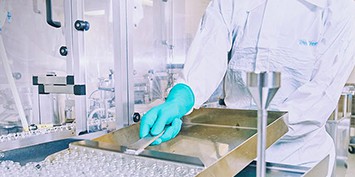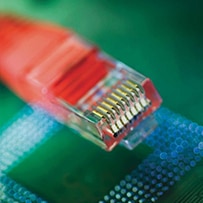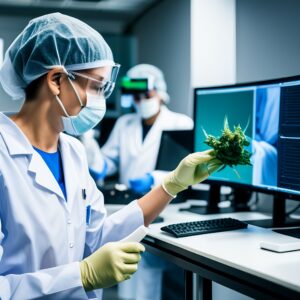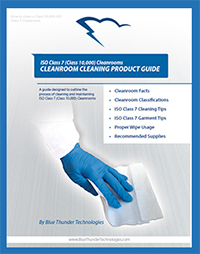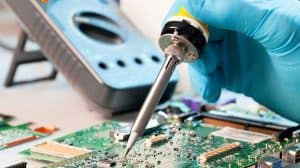Category Archives: Cleanroom Cleaning
Cleaning a cleanroom needs to be done with great precision. Check out this guide to learn how to clean a cleanroom.
Clearly, when it comes to maintaining a cleanroom, cleaning is kind of important. There are strict protocols to follow to ensure that the cleanroom remains just that – a totally sanitized space that is suitable for its purpose.
As cleanrooms classifications range from ISO Class 3 to ISO Class 7, and cleanrooms can be used for a range of purposes, specific requirements will vary.
Read on for our guide to the essentials of cleanroom cleaning.
Before beginning to clean your cleanroom, you’ll need to suit up.
That means putting on a cleanroom suit, which consists of a white coverall. This is usually one piece, and incorporate overshoes and a hood. They are designed to ensure that no skin cells or hair are shed in a controlled environment.
Given that 80% of contamination in a cleanroom comes from people, you can see why even when cleaning, suiting up is important.
Powder-free gloves are also a must.
Make sure that you bring have the following supplies to hand:
- Non-linting cleanroom wipes
- Cleanroom mops
- Specialist trash bags
- Swabs
- HEPA filter vacuum
- Detergents
- Disinfectants
Each cleanroom will have its own specific protocols that dictate the cleaning detergents and disinfectants that can be used, and how frequently they should be cleaned.
The first stage is to clean the room thoroughly with detergent, before disinfecting.
Cleaning the Walls
Begin the cleaning by cleaning the walls. Take a dedicated, cleanroom mop and bucket with the detergent solution already prepared.
Carefully wet the mop. Starting in the furthermost corner away from the door, place the mop in the top right-hand corner and bring it down the wall in a straight, even stroke.
Continue in overlapping strokes along the wall. Take care not to allow the mop to touch the floor. If it comes into contact with the floor, replace the mop head and continue.
Rewet the mop approximately every two meters.
Alternative methods include using horizontal strokes, or vertical to the half-way point, and horizontal for the lower portion. This prevents the transfer of dirt from the lower to the upper parts of the walls.
Cleaning the Floor
Again, begin in the corner furthest from the door.
Charge the mop with disinfectant. As for the walls, use overlapping, straight line strokes to cover the area of the floor. Continue mopping the whole room, rewetting the mop about every square meter.
Work your way back towards the entryway, and do not step on any parts that have been mopped. The S Curve method can also be used instead of place and pull.
The Bottom Line: How to Clean a Cleanroom
Cleaning a cleanroom requires suiting up, assembling the right equipment and supplies ahead of time and following strict protocols that even govern how you mop the floors and walls.
Following these will ensure that the room remains sanitized and fit for purpose.
At Blue Thunder Technologies, we're a premier supplier of products for controlled environments. If you're running a cleanroom, we have everything you need to keep it up to standard.
Latest Cleanroom Cleaning Posts
Soldering and De-soldering Process for PCBs
Soldering is a process that joins together two or more items (usually metal) by melting,[...]
Jun
Contamination Control in Pharmaceutical Cleanrooms
Contamination control in pharmaceutical clean rooms is driven by various technologies and disciplines like engineering[...]
May
Controlling ESD in Electronics Manufacturing
Electrostatic Discharge (ESD) are an ongoing challenge in the manufacturing of electronics. By focusing on[...]
May
Cleanroom Validation – Basic Principles
Cleanrooms are expensive to build and maintain because they must be customized to produce a[...]
May
Personnel Grounding – Basic ESD Control Principles
Personnel working with sensitive electronic products must be protected against producing and receiving electrostatic discharge[...]
May
503B Pharmacy vs 503A Pharmacy – Compounding Pharmacies
In 2012, 64 deaths and 751 injured patients resulted from a contaminated medication from the[...]
May
The Importance of an ESD Workstation
Electro-Static Discharge (ESD) protection is crucial to the various phases and tasks of electronics production.[...]
May
Gloves for Medical vs Gloves for Cleanroom Applications
There are two main differences between a glove used in a clean environment and a[...]
Apr
The Best Way to Clean Cleanroom Floors
Contamination sources that find their way into your cleanroom can be broadly classified into two[...]
Apr

